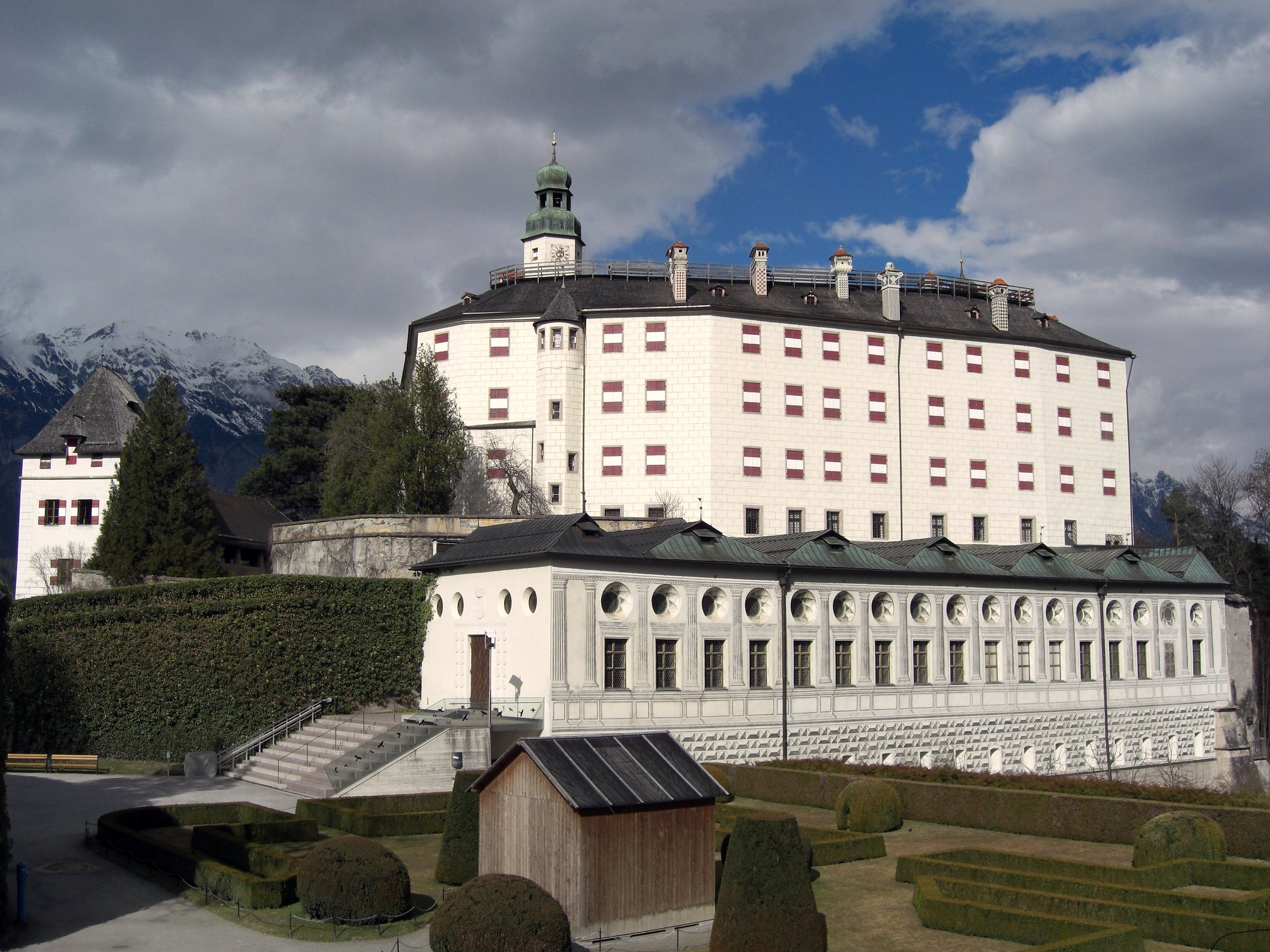Ambras Castle, located in Innsbruck, Austria, is a Renaissance castle and palace built in the 16th century. Originally constructed as a fortress in the 10th century, it was transformed into a lavish residence by Archduke Ferdinand II of Austria. The castle is renowned for its extensive art collection, including portraits, armor, and curiosities gathered by Ferdinand II. It houses the Habsburg Portrait Gallery and a unique Chamber of Art and Wonders. Ambras Castle is considered one of the oldest museums in the world and a prime example of Renaissance architecture in the Tyrol region. Its picturesque setting on a hill overlooking Innsbruck and its well-preserved interiors make it a popular tourist attraction and an important cultural landmark in Austria.
Ambras Castle, nestled in the picturesque hills of Innsbruck, Austria, is a treasure trove of history and art. While the castle itself is a marvel to behold, it’s the hidden gems within its walls that truly captivate visitors. Among these, the armory collection stands out as a testament to the power and prestige of its former inhabitants.
As you step into the armory, you’re immediately transported back in time. The air is thick with the scent of aged leather and metal, and the walls are adorned with an impressive array of weaponry and armor. This isn’t just any ordinary collection, though. It’s a carefully curated assemblage that tells the story of European warfare and craftsmanship spanning several centuries.
One of the first things that catches your eye is the gleaming suits of armor. These aren’t just display pieces; they’re works of art in their own right. Each suit is intricately designed, with elaborate engravings and embellishments that speak to the wealth and status of their original owners. You can almost imagine the knights of old, clad in these magnificent suits, riding into battle or participating in grand tournaments.
But it’s not just the armor that impresses. The collection of weapons is equally awe-inspiring. From ornate swords with jewel-encrusted hilts to massive two-handed greatswords that look like they could cleave a man in two, the variety is staggering. There are also crossbows, halberds, maces, and other weapons that you might have only seen in movies or read about in history books.
What’s particularly fascinating about this collection is how it showcases the evolution of warfare over time. You can trace the development of armor from the heavy, full-body suits of the Middle Ages to the lighter, more mobile designs of the Renaissance. Similarly, the weapons on display reflect changing tactics and technologies, from the brutal simplicity of early medieval weapons to the more sophisticated firearms of later periods.
But the armory isn’t just about war and violence. It’s also a testament to the skill and artistry of the craftsmen who created these pieces. Many of the items on display are adorned with intricate engravings, inlays, and other decorative elements that elevate them from mere tools of war to true works of art. It’s a reminder that even in times of conflict, human creativity and ingenuity flourished.
As you wander through the collection, you’ll also come across some unexpected treasures. There are exotic weapons from far-off lands, gifts from foreign rulers that speak to the global connections of the castle’s former inhabitants. You might spot a Turkish scimitar with its distinctive curved blade, or a Japanese katana with its razor-sharp edge.
What makes this collection truly special, though, is its connection to the castle’s most famous resident: Archduke Ferdinand II of Austria. A renowned collector and patron of the arts, Ferdinand amassed much of this collection during his lifetime. Each piece tells a story not just of warfare and craftsmanship, but of Ferdinand’s own interests and the political landscape of 16th-century Europe.
As you leave the armory, you can’t help but feel a sense of wonder at the history you’ve just witnessed. These aren’t just old weapons and armor; they’re tangible links to a bygone era, each with its own story to tell. The armory collection at Ambras Castle is more than just a museum exhibit – it’s a journey through time, a testament to human skill and artistry, and a reminder of the complex tapestry of European history.
Ambras Castle stands as a testament to Renaissance architecture and the passion of Archduke Ferdinand II for art and knowledge. Its significance lies not only in its stunning location overlooking Innsbruck but also in its role as one of the earliest purpose-built museums. The castle’s extensive collections, including the Chamber of Art and Wonders, the armory, and the Habsburg Portrait Gallery, offer invaluable insights into 16th-century European culture and the interests of nobility. Today, Ambras Castle continues to captivate visitors with its blend of historical importance, artistic treasures, and picturesque setting, serving as a vital link to Austria’s rich cultural heritage.

